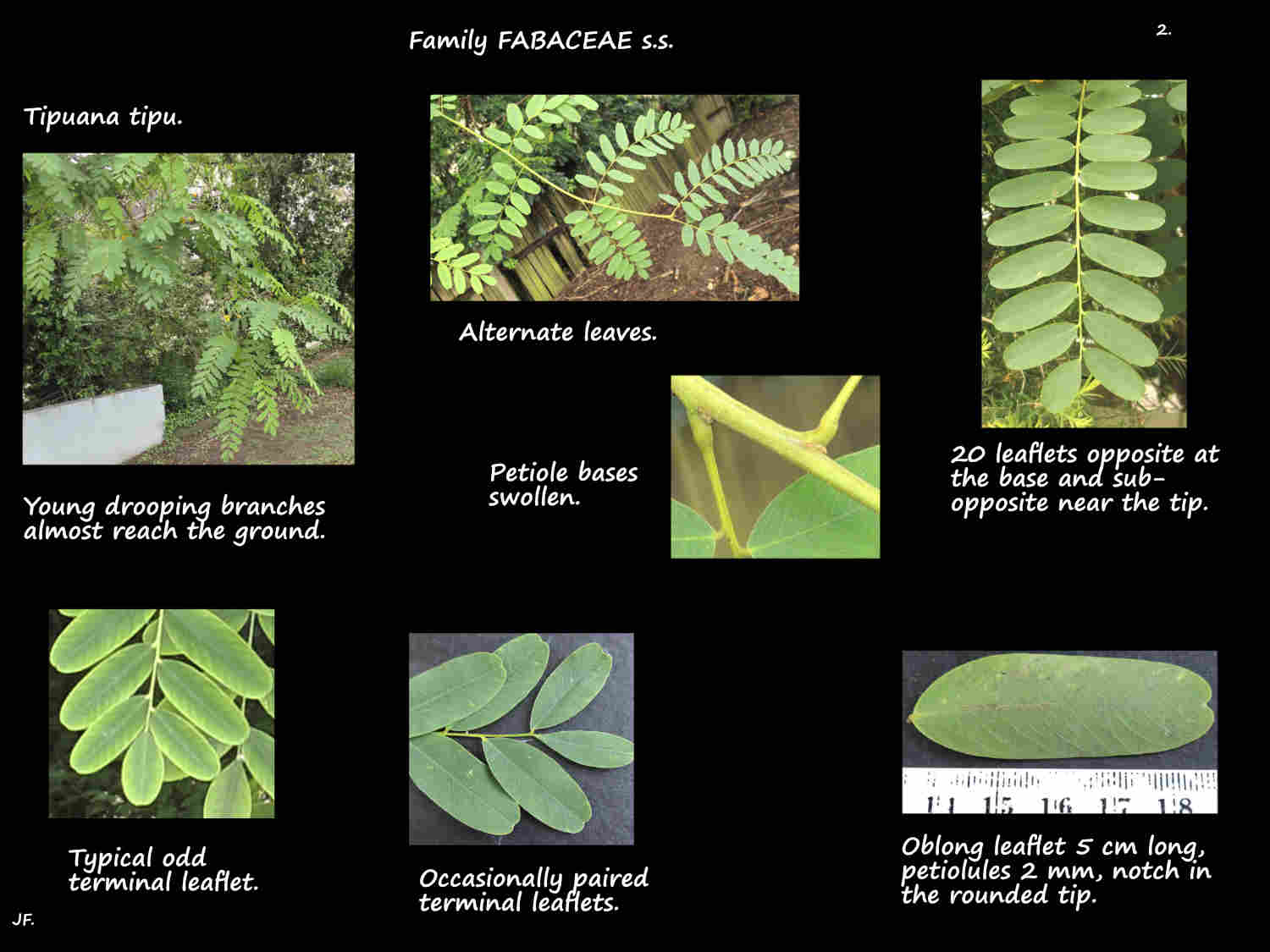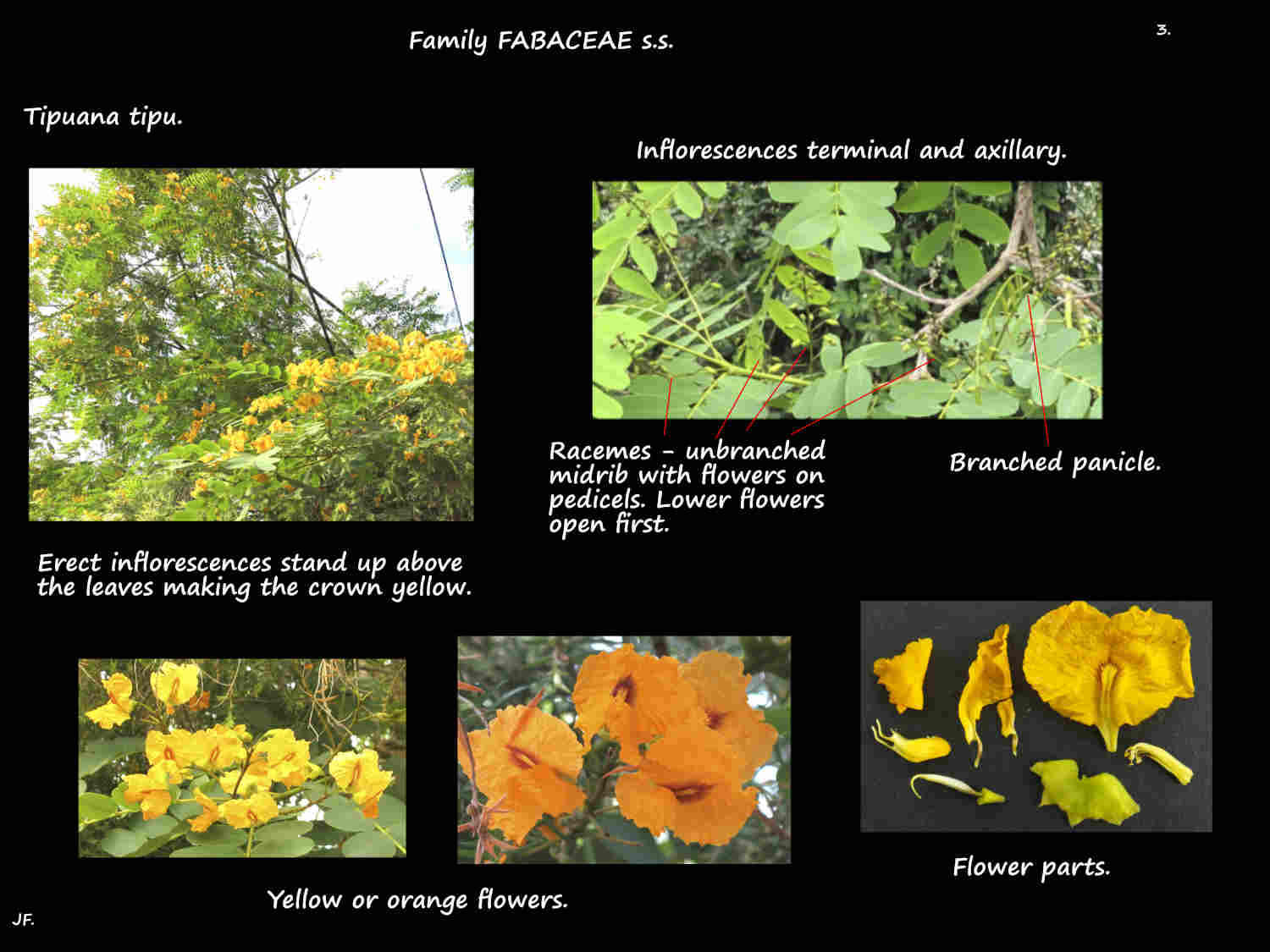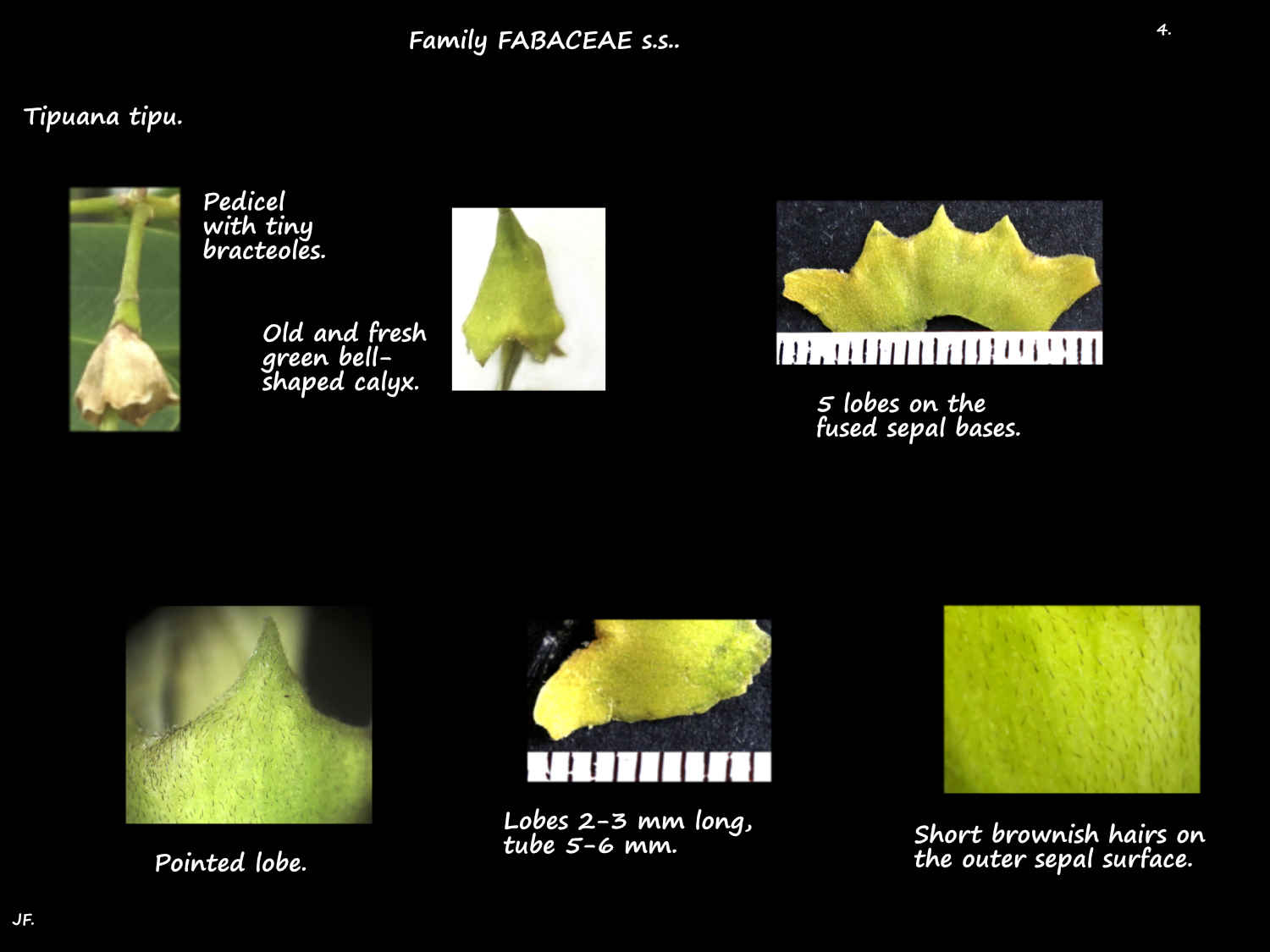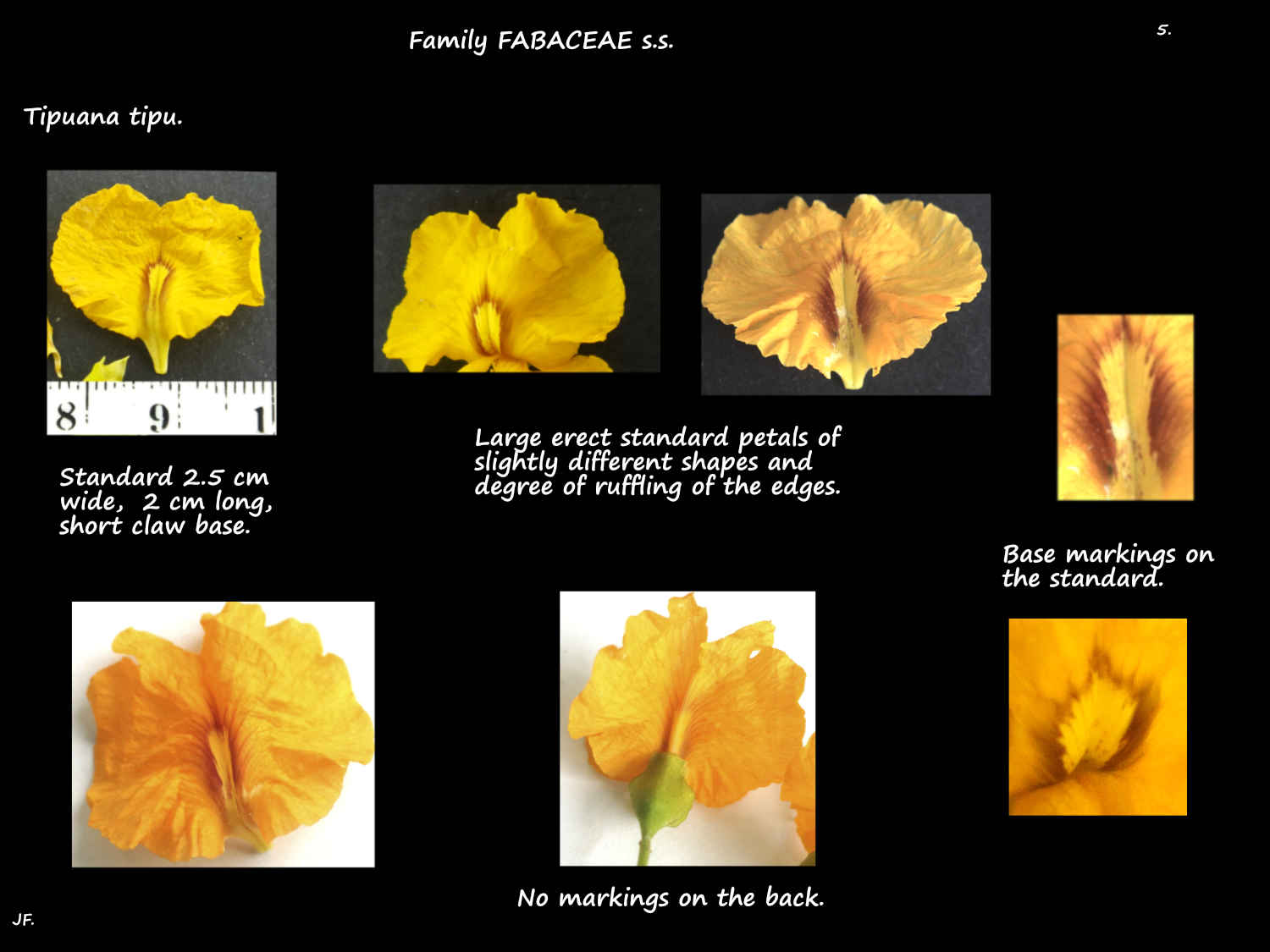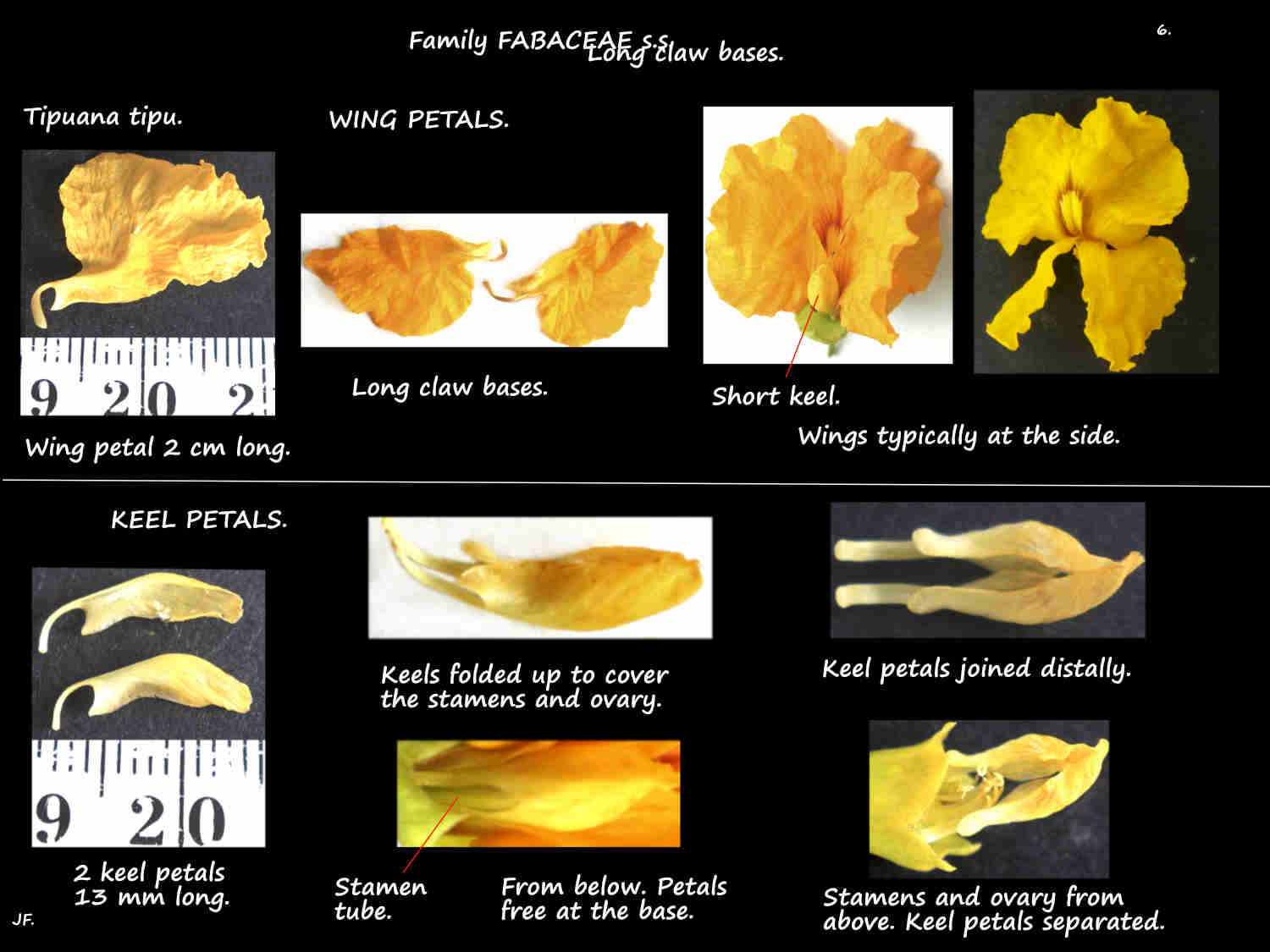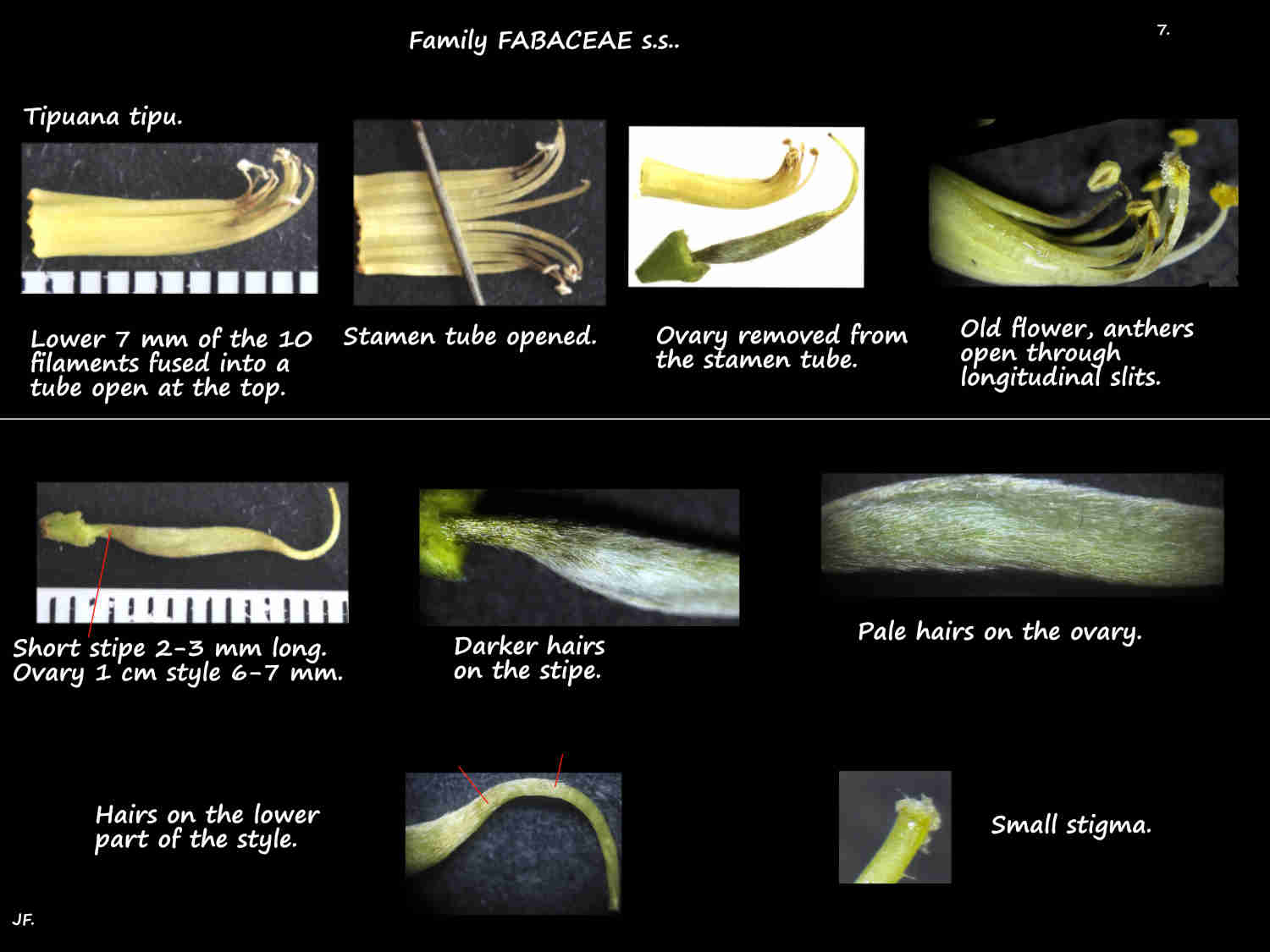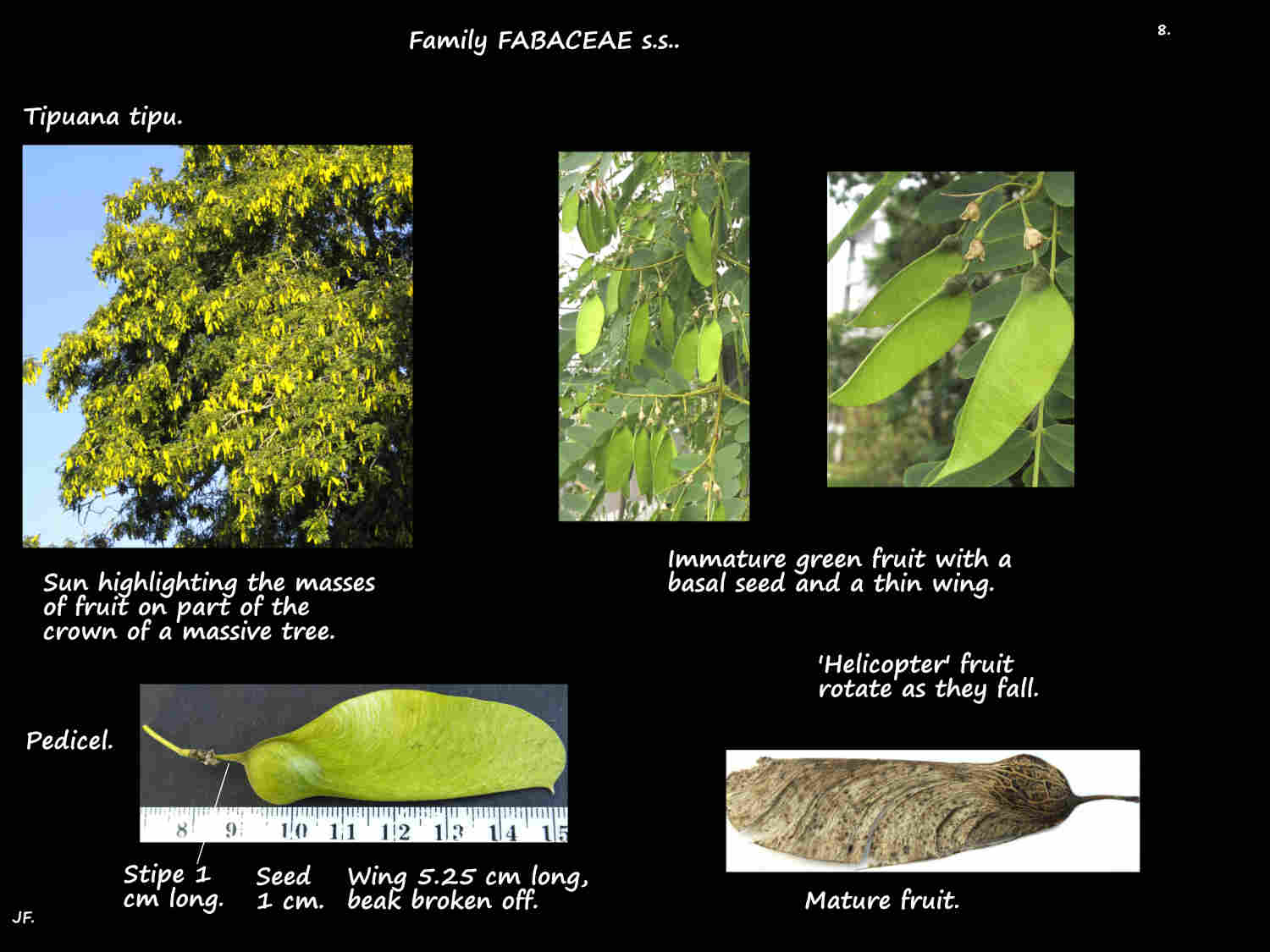Tipuana tipu.
Large trees commonly seen from 8 to 10 m high they can reach 30 m in the wild.
Long spreading branches give a flattish crown that is often wider than the tree is high.
Young drooping branches may almost reach the ground.
The bark develops deep vertical fissures and may flake off.
The (evergreen here) pinnate leaves are alternately arranged.
The petioles, up to 2 cm long have a swollen base or pulvinus.
Leaves, 25 cm long have up to 21 (29) leaflets on petiolules a few mms long.
Leaflets are opposite but become sub-opposite near the end of the leaf.
This means that leaves typically end in a single leaflet but they may occasionally end in a pair.
The oblong leaflets are up to 5 cm long by 2 cm wide with a rounded tip that often has a notch.
Inflorescences are erect terminal and axillary racemes.
The midrib has flowers on short stalks with the lower ones opening first.
Some are branched forming a panicle.
The typical pea-shaped flowers are around 2 cm long and wide.
The bases of the 8 mm long sepals are fused into a tube with 5 pointed lobes.
The corolla has 5 petals with the largest being the erect upper standard.
This is roughly circular with a deep or shallow notch at the top.
The 2 lateral wing petals are around half the size of the standard.
Smallest are the 2 lower keel petals which have their lower edges partially fused.
The petals fold up enclosing the the stamens and ovary.
Petals are bright yellow to orange-yellow and the standard has a reddish patch near the base.
All petals have a narrow claw base especially the wings and keels.
The edges of the standard and wings are ruffled.
The bases of the 10 stamen filaments are fused into a tube that is mostly open on the top.
The elongated hairy superior ovary is on a stalk or stipe.
It has one locule with 1 (rarely 2 or 3) ovule.
The single style, with a small stigma extends past the anthers.
The dry indehiscent fruit resembles a samara.
On a short stalk from the stipe it has a swollen base with the seed and the wall of the ovary is expanded into a thin wing.
They mature from green to grey-brown.
Known as ‘helicopter’ seeds as the wing rotates like a helicopter blade as they fall from the tree.
Trees produce masses of fruit each year many of which germinate.
J.F.


